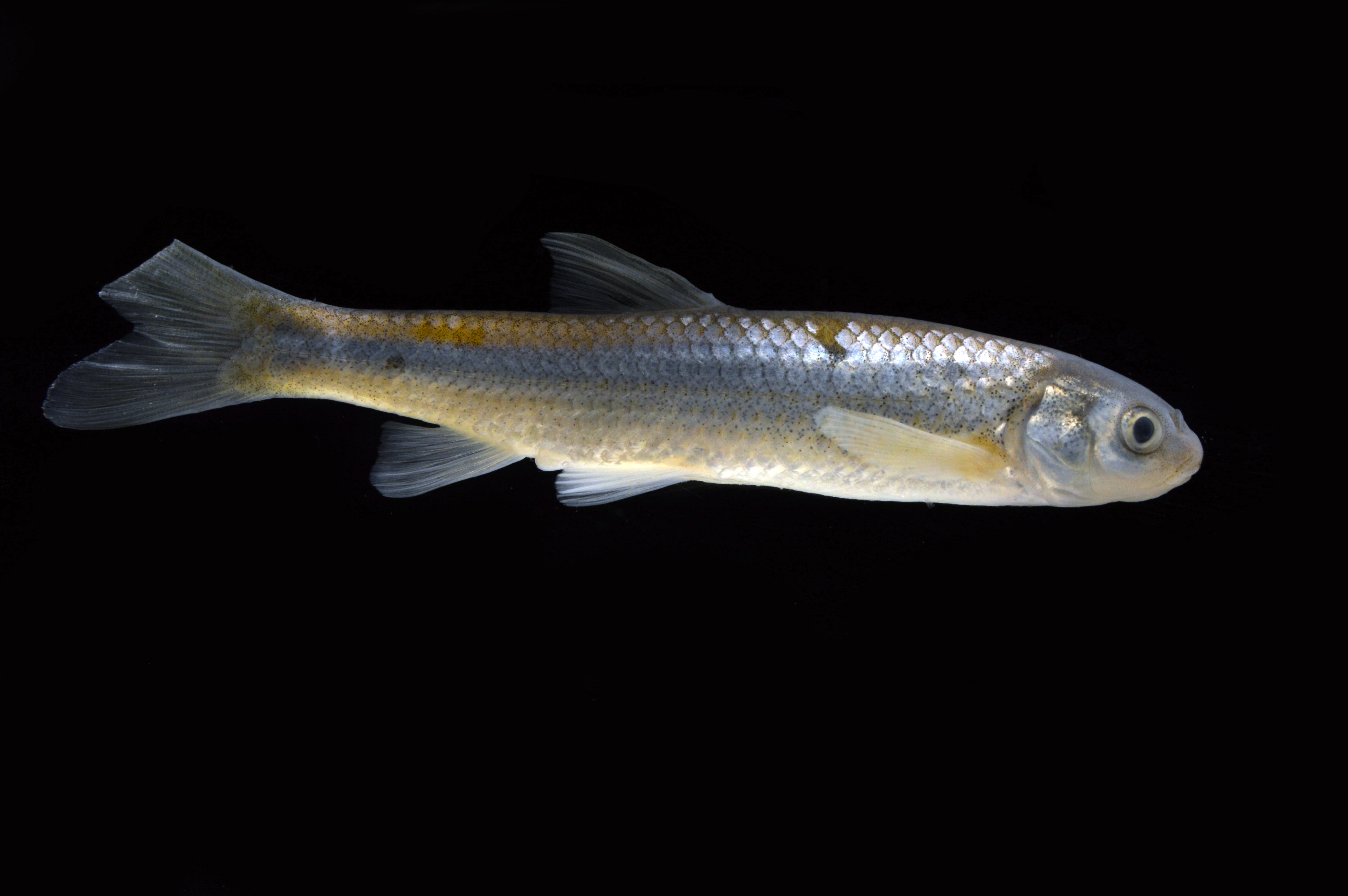Rio Grande Silvery Minnow
In 1979, the Rio Grande silvery minnow (RGSM) was listed as threatened by New Mexico State. In 1994, the species was federally listed as endangered by the U.S. Fish and Wildlife Service. The status of the RGSM was uplisted to endangered by New Mexico State in 1996.
-
Scientific Name: Hybognathus amarus
-
Species Abbreviation: RGSM
-
Status:
Federally Endangered Species;
New Mexico State Endangered Species;
New Mexico Species of Greatest Conservation Need
- Documents
-
View documents from the Program Library.
See All documents

Photo Credit: U.S. Fish and Wildlife Service
- New Mexico Department of Game and Fish Threatened and Endangered Species of New Mexico 2018 Biennial Review
- New Mexico Department of Game and Fish Wildlife Notes
- U.S. Fish and Wildlife Service Environmental Conservation Online System
- U.S. Fish and Wildlife Service Rio Grande Silvery Minnow
- U.S. Fish and Wildlife Service Rio Grande Silvery Minnow Recovery Plan First Revision
- Biota Information System of New Mexico (BISON-M)
Description
The RGSM has a small, cylindrical body that is greenish-yellow above and cream-to-white below. The fish has a moderately small set of eyes and mouth, and it reaches approximately 3.5-4 inches in total length. The RGSM has an omnivorous diet consisting of algae and diatoms, supplemented with benthic macroinvertebrates foraged from the bottom of the river. Habitat preference varies by life stage, but, in general, the species prefers slow to moderate- to low-velocity water with a mud, gravel, or shifting sand-silt substrate. It tends to occupy off-channel areas where water is 8-31.5 inches deep and it generally avoids main channel runs, which can be deep with fast-moving water. Overwintering RGSM are commonly found in still water with debris cover and in isolated pools near diversion structures. The fish also can be found in irrigation ditches and canals.
RGSM spawning is associated with spring runoff and snowmelt combined with increasing water temperatures. Reproductive activity typically consists of several sessions of spawning separated by 10-minute intervals. The males pursue the females and then, when the females are receptive, the males wrap around the females and sperm and eggs are released together, producing semi-buoyant fertilized eggs. Downstream egg drift appears inversely related to flow and recruitment. RGSM eggs hatch within 24-50 hours of fertilization, and the larvae begin to swim and feed 3-4 days after hatching. RGSM reach full maturity at one year.
Distribution
The RGSM was once abundant in the Rio Grande basin from Colorado south to Texas and into Mexico. In New Mexico, its historical range included the Chama River, parts of the Jemez River, parts of the Pecos River, and most of the Rio Grande. The RGSM currently is found only in the stretch of the Middle Rio Grande of New Mexico from Cochiti Pueblo downstream to the in stream flow of Elephant Butte Reservoir.
Recovery Efforts
The decrease in the RGSM population correlates directly with anthropogenic modifications and alterations to the Rio Grande. Over the past century, the Rio Grande has been affected by water diversions, dam building, channel straightening, and removal of snags and aquatic plants. Reduction in the complexity of the river has resulted in loss of habitat for the RGSM. Although the species still exists in a small stretch of the Middle Rio Grande, this portion of the river often goes dry due to irrigation diversions and low precipitation.
Since the RGSM was federally listed as endangered in 1994, several long-term, ongoing initiatives have targeted its conservation and recovery. Since the early 2000's, MRGESCP signatories have partnered to expand and coordinate efforts to recover, conserve, and protected the RGSM through habitat restoration; population monitoring; egg collection; genetic studies and monitoring; rescue and salvage; augmentation of the wild population with captive-raised fish; rearing, breeding, and captive propagation; collaborative river management and operations; and scientific research.
